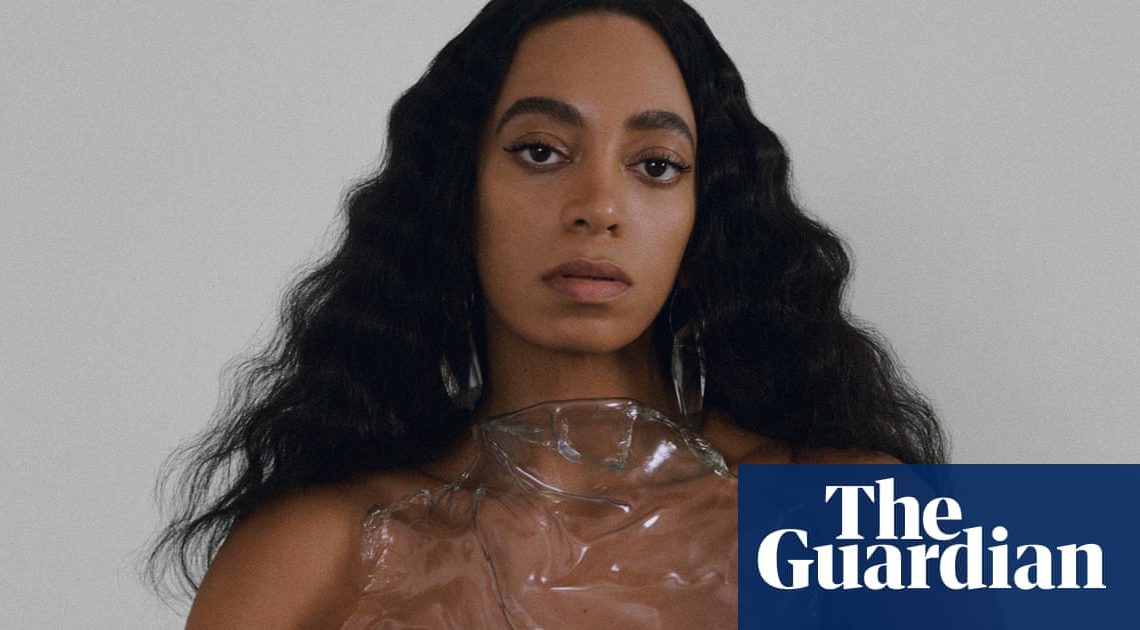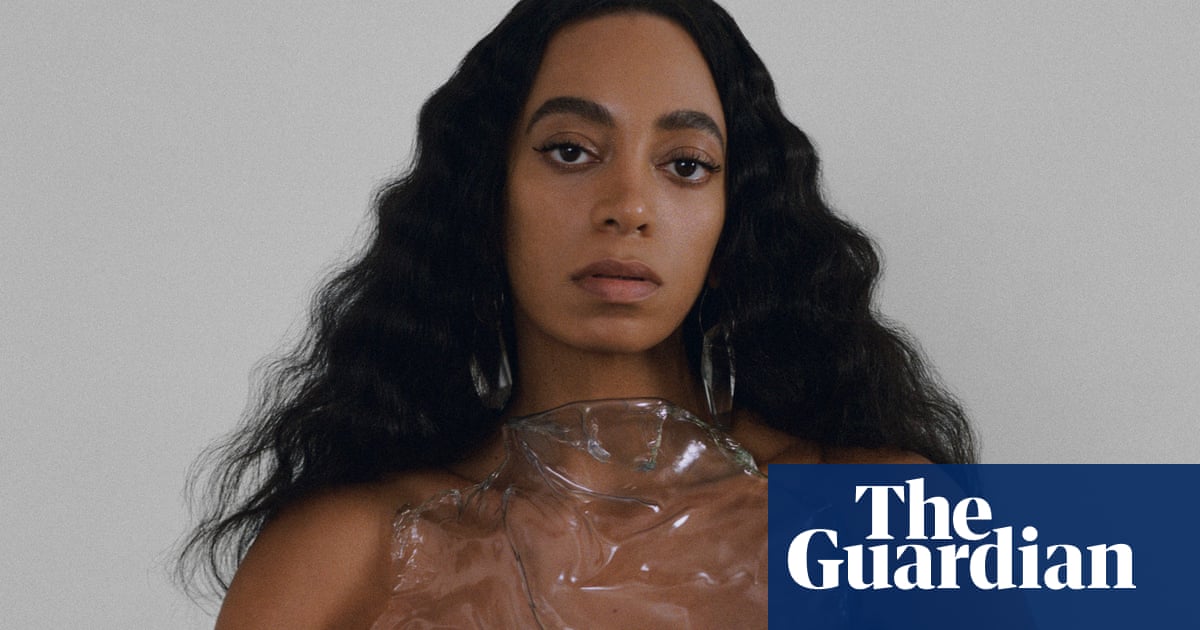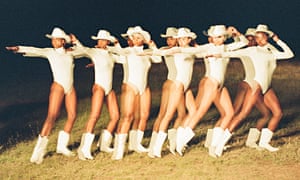
‘Blackness will never go away’: how Solange takes pride in her roots
March 11, 2019At an immersive, city-wide multimedia presentation of her new album When I Get Home, the singer-songwriter explains how her childhood home of Houston nourished her creative spirit

Its one thing to think with your spirit, says Solange Knowles. Its another to actually live it through your body. The Solange of today works with feelings, grooves, and frequencies in mind. If A Seat at the Table, her breakthrough third album, was a lyrically dense record about the complexities and struggles of the black American experience, then When I Get Home, her latest release, is the sonic manifestation of that blackness. Staccato rhythms and meditative mantras designed to ground and heal her after time on the road ripple on through the bodies of her listeners. Its an album about settling into familiarity: with yourself, the people around you, and the places one calls home.
At the SHAPE community center in the third ward of Houston last Sunday evening, the record comes to life during a screening of a film, also entitled When I Get Home, that Solange created and directed to accompany the album. Despite the celebrities in attendance, this isnt a premiere. The album arrived days before, with the film launching simultaneously on Apple Music and the recently revived, early-internet social network Black Planet. Instead, it is a celebration of her return to her roots.
After previous projects reflected time spent in the deserts of California and a township in Cape Town, Solanges native Houston serves as the inspiration for her latest and most challenging work. For years, she existed to most people as just the little sister of global superstar Beyonc; her talents needed the right outlet to radiate. Her first taste of the spotlight was as a backup dancer for her sisters group, Destinys Child. By her late teens, she began crafting songs for the group and its members Kelly Rowland and Michelle Williams, plus gospel girl group Ramiyah. She even worked on two of her sisters best and most underrated hits, Upgrade U and Get Me Bodied, from Beyoncs second solo album BDay.
With blockbuster producers including Timbaland and The Neptunes, Solo Star, Solanges debut album released in 2002 at the age of 16, now sounds more like the inner workings of her label and management than anything she would make for herself. It was not until Sol-Angel and the Hadley Street Dreams, her second album released nearly six years later, when she began to break through, at least in the indie world. Influenced by 60s and 70s Motown, the album was a far cry from her debut, abandoning what was fashionable to focus on the aesthetics that moved her most a tactic that later fed into the minimalist synths structuring 2012s True EP.
But it was not until A Seat at the Table in 2016 that the rest of the world began to take notice. The album, which makes weighty ruminations on black American female identity feel universal, went gold in the US and led to headline festival performances. Cranes in the Sky, a fan favourite single from the album, won her a Grammy for best R&B performance.
View this post on InstagramA post shared by @ saintrecords on
So where is Solange now? Consider a scene toward the end of her film. Tens of dancers, in varying shades and sizes dressed in black, gather around a white circular object in a sparse, desert-like setting three curved, disconnected and multi-tiered structures form a circle, with groups interspersed throughout. This is not just a music video, it is video art, a sculpture of massive proportions, performance art, and more, all for one song. She turns the genre of R&B into a massive, interdisciplinary space to explore, build, and play.
Im thinking about the possibility of maybe some young black girl in 20 years needing to reference a black sculptor whos making work that large, and in landscape like that, and the blessing and privilege [that] I might come up in that search, Solange begins. Of course, I want to make these massive landscapes and express these parts of me … because its beautiful, and I want to make astounding work. But I really want to make work to be discovered 50 years from now.
Time on the road promoting and performing for A Seat at the Table mentally, physically, and emotionally disjointed her. I had so much to give on my last project while also needing to heal and work on myself, she says. [A Seat at the Table] was for everybody. I wanted it to be. And [When I Get] Home is for me.
I think any time you go through something like that, you crave things that remain the same, she says, referring to the gruelling tours for her previous album. I know that at any given time in my life, I can come back here, to Houston, to third ward, and have these anchors. And she did quietly renting a house and writing new music to reflect her journey. The longer I was here, the more these sort of things that might have been mundane to me, visually, started to really enrich me.
Guests from the screening got a closer glimpse of Solanges Houston, her first home. There was Emancipation Park, first formed in 1872 the oldest in Texas, it was once the only public park open to black people in the state. A friendly middle-aged security guard roaming the premises spoke of how the neighbourhood had changed as a result of gentrification. What was once the battleground of an infamous shootout between Houston police and the Black Panthers, has since transformed into a vast, inviting space, featuring everything from a community centre and playground, to pools, athletic courts, and a live concert venue.
View this post on Instagrammy Sol-Angel… no one talk to me ever again
A post shared by Nyah Bernucho (@nyahcb) on
In 2016, she made headlines as an advocate and participant in the #BlackBank movement, which encouraged black Americans to move their money into black-owned banks Knowles chose Unity National, the only African American-owned bank in Texas. Inside a nearby branch, a spokeswoman offers cards and pamphlets about its services while red leather chairs, typically reserved for staff and customers, were used as seating for a screening of Knowless film.
And there was the Vita Mutari salon, previously owned by Solanges mother, Tina Knowles Lawson, for 20 years. The singer describes it as a ground for her creativity, and although the family no longer occupy the space, the current owners continue to maintain that creative spirit, with large pieces of art lining the walls and neon coloured bottles of hair products.
Each location (there were nine in total) held meaning for Solange; bits and pieces of this Houston found their way into her work. Blackness will never go away, she says. Its who I am. Its what I know. Ill always be a black woman, and Ill always create work from this black womans body. Ill always be from third ward.
Texans are grounded in their culture. Although the state may often be the source of ridicule by outsiders, there has been and always will be innovation born out of its simultaneous vastness and insularity. Only here could you get a mix of zydeco tunes, rhinestone-covered African American cowboys, block-wide churches, barbecue, purple drank and Nasa. Its this editing this commingling and distillation of seemingly disparate things that defines When I Get Home.

Editing gives me the space to experiment and then hone back on the things that were whack, Solange says. I feel a lot of safety and comfortability in editing. She says it accounts for 80% of her work. When I Get Homes long, insular and solo writing sessions, as well as the improvisational studio sessions with a bevy of collaborations in the vein of free-form jazz, will be indiscernible to the average listener but she took bits and pieces from those sessions and folded them into overall tracks.
Focusing on specific lines became not only a part of the editing session, it became the foundation of the album. Inspired by the likes of Alice Coltrane and Stevie Wonders Journey Through the Secret Life of Plants, repetition such as the brown liquor, black braids, black waves of standout track Almeda, or the lyrics to Binz, reclaiming the concept of CP (coloured peoples) time helped reinforce the frequencies she craved to heal. When I said, I saw things I imagined, maybe the first four times, I didnt actually really believe it, but by the eighth time, its coming into my spirit, coming into my body, she says.
Back at SHAPE, the most important faces in the crowd are not celebrities or cool kids. They are the childhood friends who once formed a rough band with the artist during her adolescence. They are the young, Texas-bred creatives who collaborated on the film, and the Instagram hotties who steal the show in its Solange-less parts. These are her people, the true essence of home, even if the rest of us were just getting to know them. All of them helped form her singular vision; all of them mattered. She calls the whole project a true reflection of who I am, the things that I love to listen to, the things that I love to experience; a snapshot of myself. It just feels good. Thats what home does to you.
Read more: http://www.theguardian.com/us

